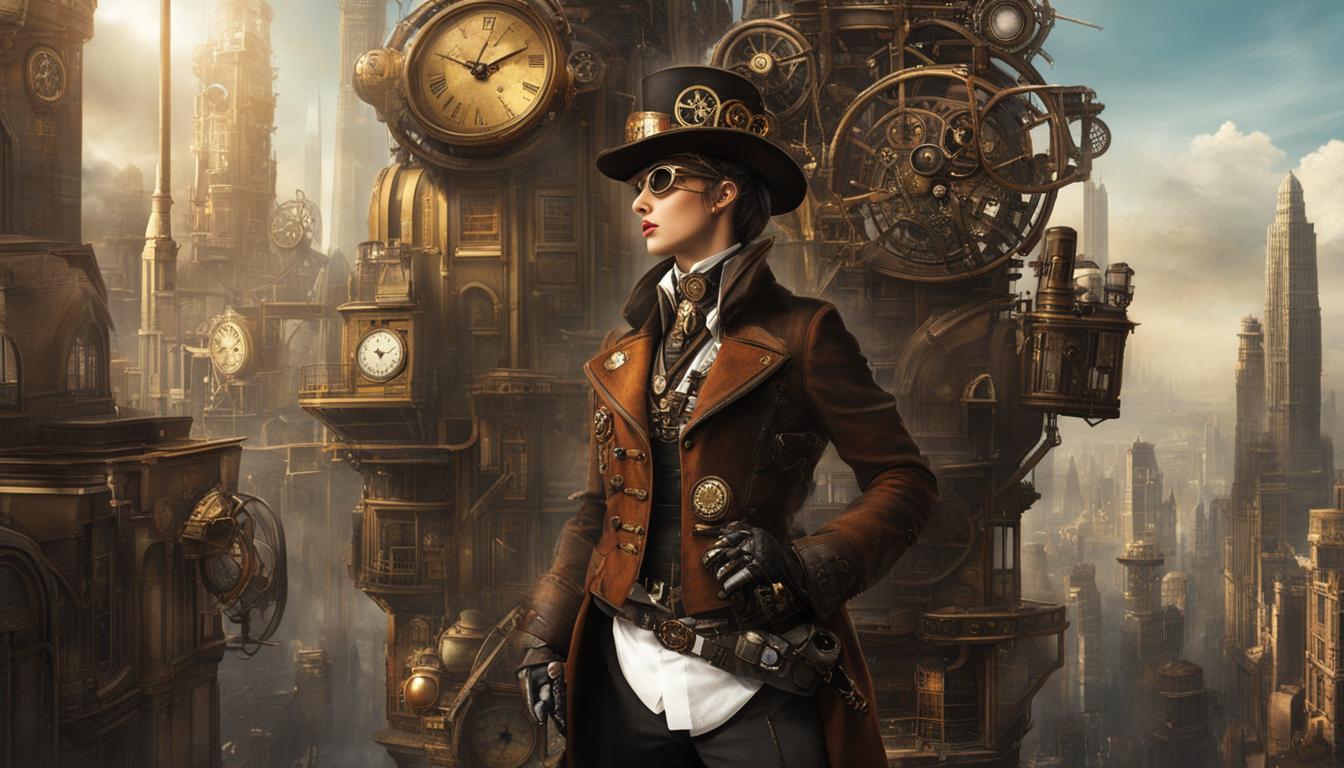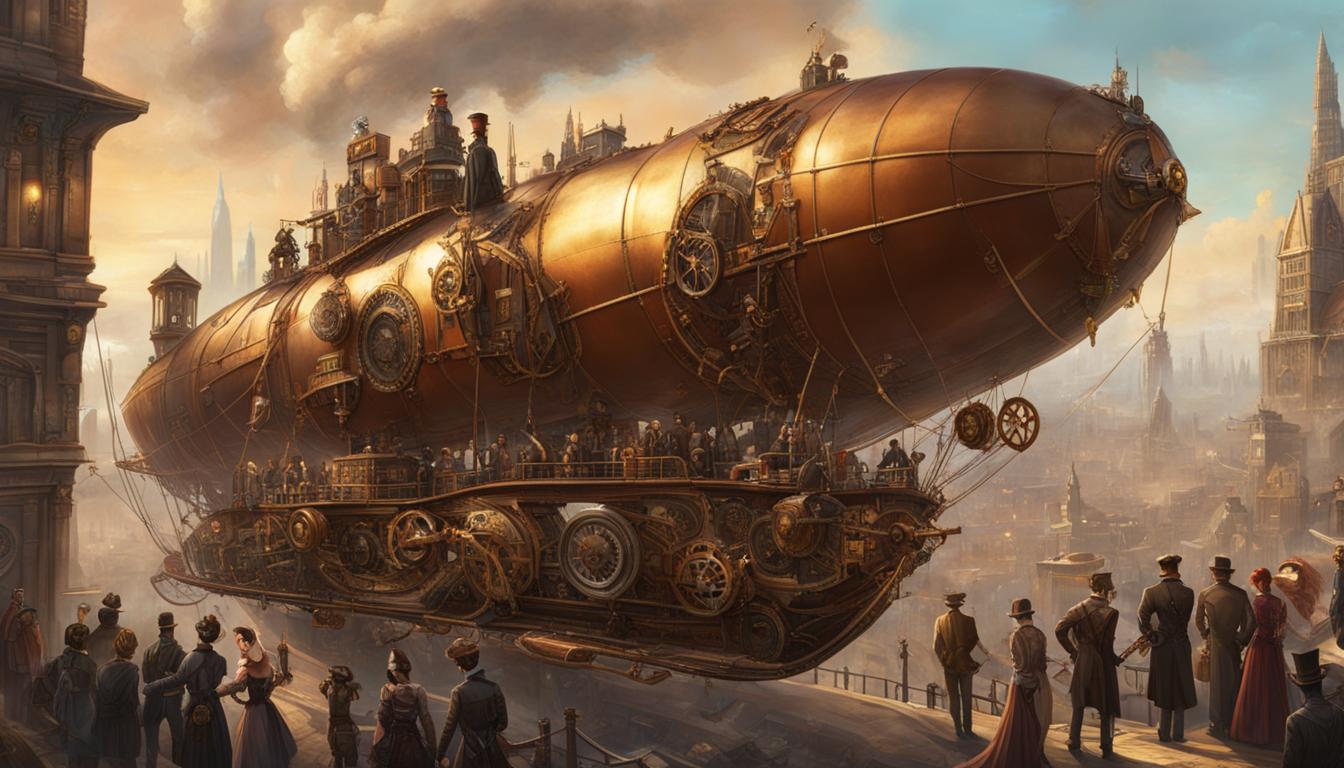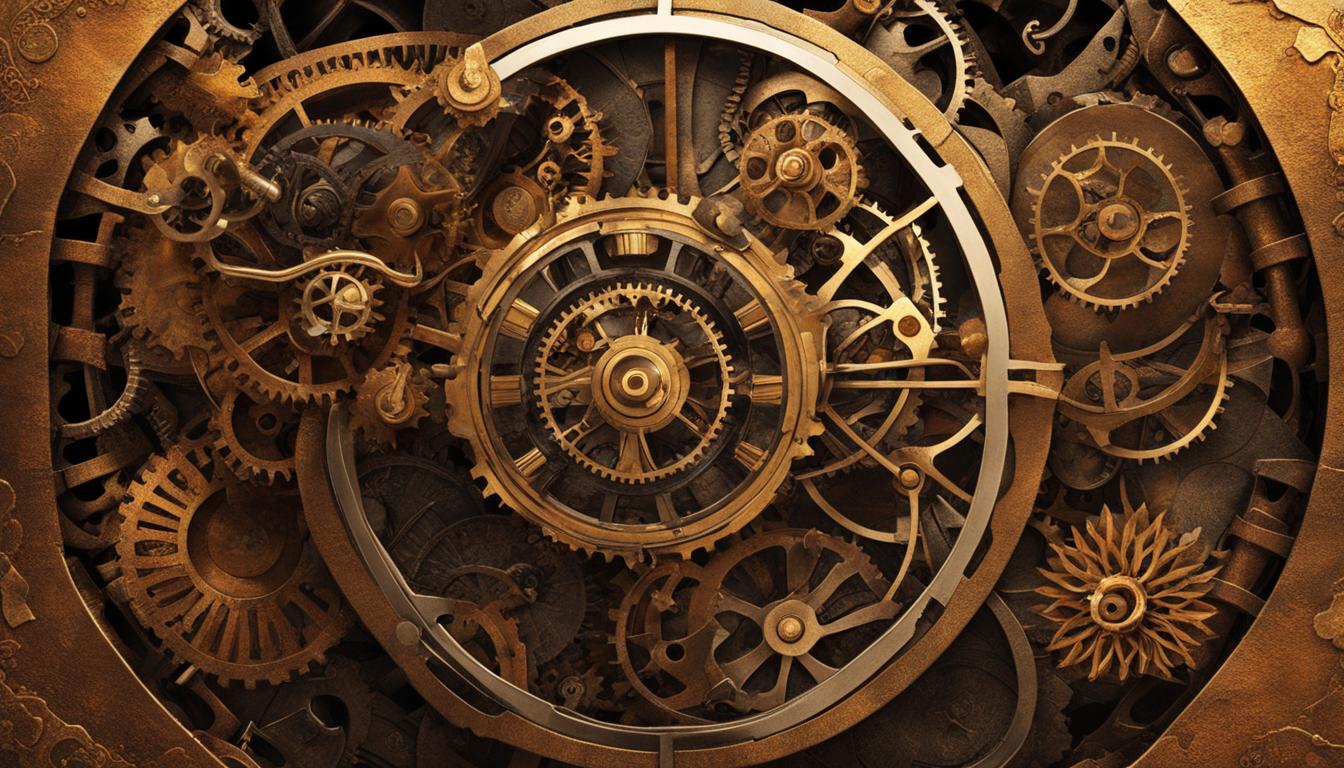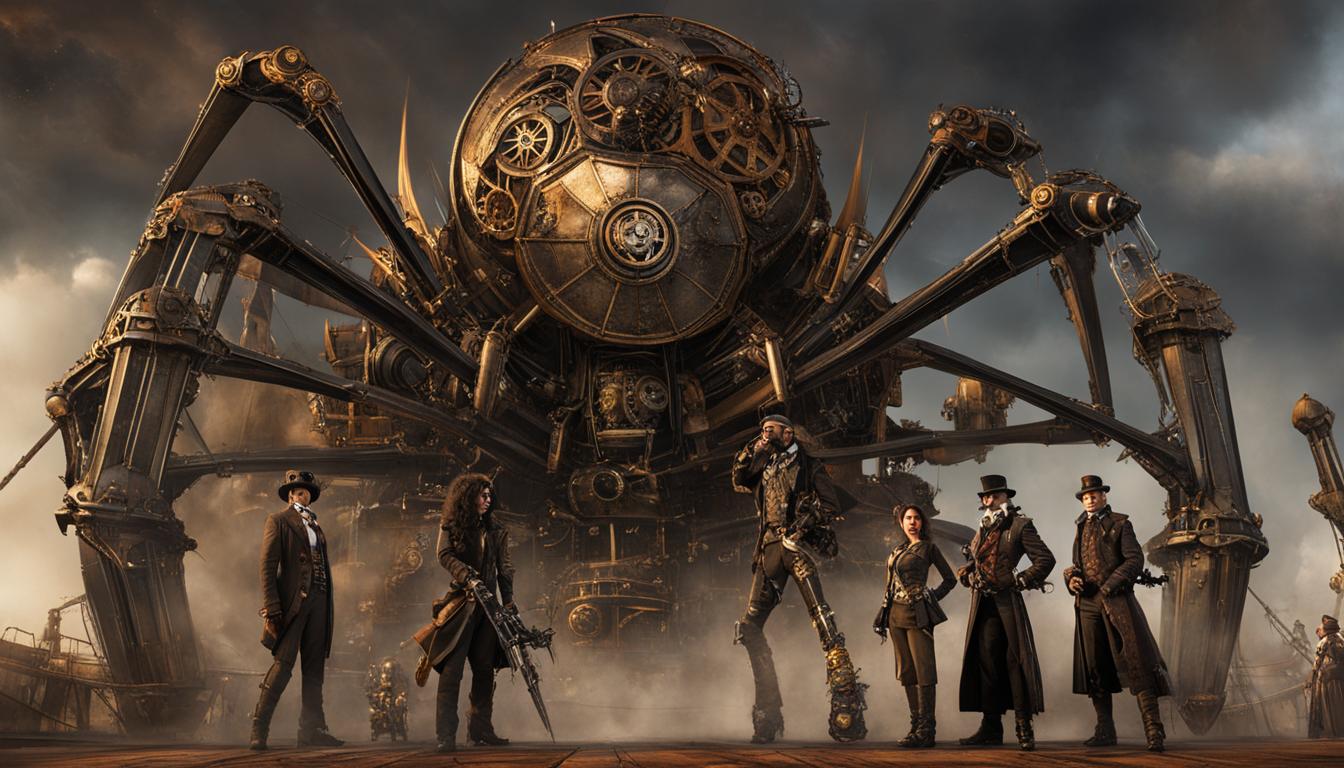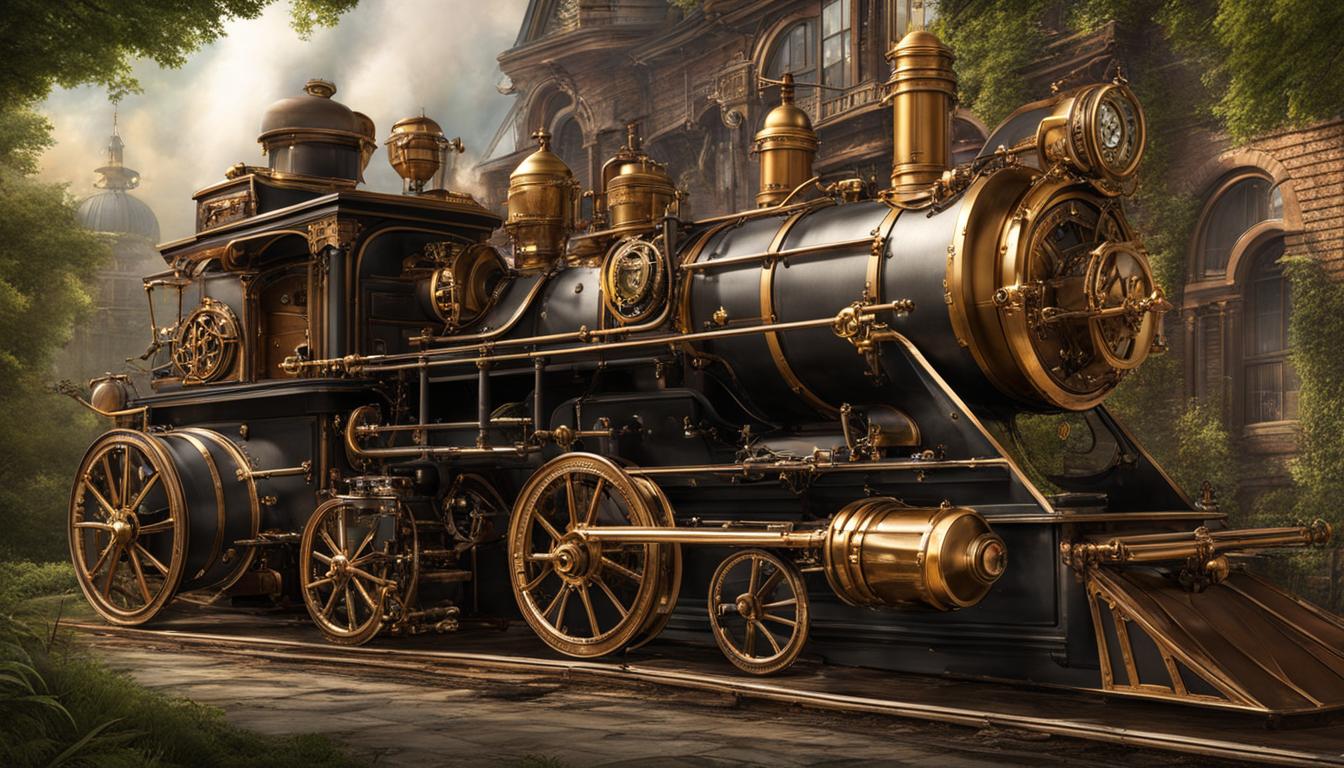Steampunk, a subculture that has emerged in recent years, is captivating audiences with its fusion of Victorian aesthetics and steam-powered technology. This unique movement has made its way into various forms of media, including film, television, and music videos, leaving an indelible mark on modern-day culture.
Steampunk’s international presence is showcased through its conventions and festivals, where thousands of enthusiasts gather from around the world. Its visual characteristics and historical context make it a mesmerizing and multidimensional movement that represents resistance and transgression in the present. But what makes steampunk relevant in today’s culture?
Key Takeaways:
- Steampunk is a subculture blending Victorian aesthetics and steam-powered technology.
- It has gained recognition in various forms of media, including film, television, and music videos.
- Steampunk conventions and festivals attract enthusiasts from all over the world.
- Steampunk represents resistance and transgression in modern society.
- Its visual characteristics and historical context make it a captivating and multidimensional movement.
The Evolution of Steampunk
Steampunk, with its unique blend of Victorian aesthetics and steam-powered technology, has a rich history that spans several decades. Its origins can be traced back to the early 1900s, influenced by the works of renowned authors like Jules Verne and H.G. Wells. However, the term “steampunk” itself was coined in 1987 by novelist K.W. Jeter, marking the beginning of the first wave of American steampunk.
During the 1990s, steampunk remained a niche subculture, primarily explored through science fiction literature and graphic novels. It was a subculture that embraced the intersection of technology and imagination, combining elements of retro-futurism and alternative history. However, it wasn’t until the 2000s that steampunk experienced its second wave, characterized by a countercultural community that embraced the values of craftsmanship, individuality, and self-expression.
Today, steampunk has become a global phenomenon, influencing various artistic mediums such as fashion, film, and literature. It has captivated audiences with its enchanting blend of historical nostalgia and futuristic possibilities. Steampunk conventions and festivals are held around the world, attracting thousands of enthusiasts who come together to celebrate their shared love for this subculture.
The Steampunk Aesthetic
The steampunk aesthetic is a captivating fusion of Victorian elegance and futuristic mechanical designs. It has become synonymous with a distinct visual style that incorporates elements such as gears, goggles, corsets, and modified brass gadgets. Steampunk fashion embraces a color palette that includes jewel tones, shades of black and brown, and metallic accents like copper and brass.
Steampunk’s influence extends beyond fashion and visual elements. It has inspired the creation of unique jewelry and accessories that reflect the movement’s DIY ethos. Steampunk enthusiasts take pride in crafting their own pieces, incorporating intricate details and repurposing found objects. These handmade accessories often feature gears, keys, and clockwork mechanisms, adding an extra layer of authenticity and individual expression to their outfits.
“Steampunk fashion is a blend of history, imagination, and personal style”
The Steampunk Aesthetic in Fashion
Steampunk fashion is more than just a style; it’s a means of self-expression and storytelling. Participants in the subculture often embody characters from an alternate Victorian era, where steam-powered technology reigns supreme. By combining historical influences with futuristic elements, they create unique personas that showcase their creativity and embrace the spirit of adventure.
Steampunk’s visual elements and fashion choices have not only influenced the subculture itself but have also made an impact on other artistic communities. Elements of steampunk can be found in burlesque performances, gothic fashion, and even mainstream media. The distinct aesthetic and attention to detail make steampunk an enduring and visually engaging phenomenon in modern-day culture.
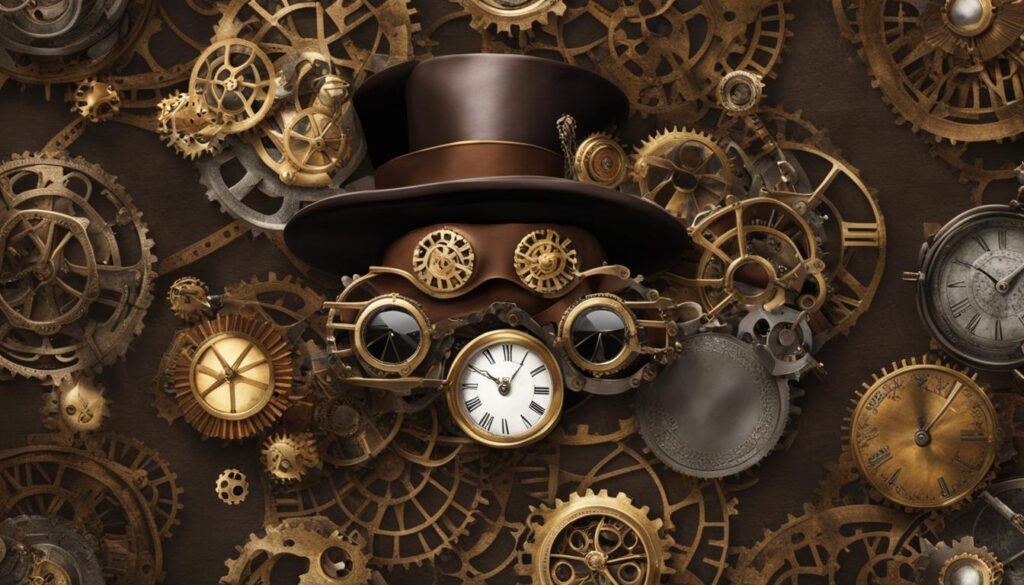
Table: Steampunk Fashion Accessories
| Accessory | Description |
|---|---|
| Gear-inspired jewelry | Necklaces, bracelets, and earrings adorned with gears and cogs |
| Top hats and goggles | Staple accessories that add a touch of steampunk flair to any outfit |
| Corsets | Lace-up corsets that accentuate the waistline, reminiscent of Victorian fashion |
| Modified accessories | Repurposed items transformed into unique steampunk accessories, such as pocket watches and compasses |
| Leather accessories | Belts, cuffs, and holsters made from leather, adding a rugged element to steampunk ensembles |
In conclusion, the steampunk aesthetic has become a prominent and admired visual style within modern culture. Its unique blend of Victorian elegance and futuristic mechanics has captured the imagination of many, inspiring fashion trends, accessories, and even influencing other subcultures. Steampunk fashion is an art form that allows individuals to express their creativity and embrace a world where history and fantasy collide.
Steampunk in Pop Culture
Steampunk has become a prominent presence in pop culture, making its mark in films, television shows, music, and literature. Its unique blend of Victorian-era aesthetics and steam-powered technology has captivated audiences and influenced various forms of media.
In the world of film and television, steampunk has left its mark with notable examples such as “The League of Extraordinary Gentlemen” and the popular TV show “Castle”. These productions embrace the steampunk aesthetic, transporting viewers to a world where steam-powered machinery and vintage fashion coexist.
“Steampunk is an aesthetic that blends past, present, and future in a visually captivating way. It offers a fresh take on storytelling and an escape from the usual tropes of mainstream media.”
Steampunk’s influence can also be seen in the realm of music and literature. Many musicians have embraced steampunk as a source of inspiration, incorporating its themes and visual elements into their music videos and stage performances. Additionally, steampunk literature has gained a substantial following, with a plethora of books and graphic novels exploring the genre’s unique blend of historical nostalgia and futuristic imagination.

Table: Overview of Steampunk Conventions
| Convention | Location | Date |
|---|---|---|
| SteamCon | Seattle, WA | October |
| Steampunk World’s Fair | Piscataway, NJ | May |
| Wild Wild West Steampunk Convention | Tucson, AZ | March |
| Asylum Steampunk Festival | Lincoln, UK | August/September |
These conventions and festivals have become an integral part of the steampunk subculture, providing an annual gathering for steampunk enthusiasts around the world. They continue to grow in popularity and attract newcomers who are captivated by the imaginative world of steampunk.
Conclusion
Mysterious, imaginative, and visually captivating, steampunk has become more than just a niche subculture – it has made a significant impact on modern society. Beyond its unique fashion and media presence, steampunk holds a cultural significance that challenges traditional narratives and reimagines history. With its blend of Victorian aesthetics and steam-powered technology, steampunk has captured the imagination of audiences worldwide, inspiring art, fashion, literature, and even other subcultures.
Steampunk’s influence on modern society goes beyond its striking visuals. It represents a desire for individuality and creative expression, as enthusiasts gather at conventions and festivals to share their love for all things steampunk. The DIY ethos of the community fosters a sense of craftsmanship and promotes the idea that anyone can create their own costumes, accessories, and gadgets. Steampunk offers an alternative vision of the future, appealing to those who yearn for a nostalgic yet futuristic aesthetic.
As technology continues to advance, the future of steampunk remains uncertain yet promising. Its cultural significance and ability to unite people from all walks of life make it a phenomenon that is likely to endure. Steampunk’s impact on modern society reveals society’s fascination with the past and the future, and its longing for a world that embraces imagination and resists conformity. With its enigmatic appeal and ever-evolving nature, steampunk will continue to inspire and captivate audiences for years to come.
FAQ
What is the history of steampunk?
Steampunk has a rich history dating back to the 1900s, with influences from Jules Verne and H.G. Wells. The term “steampunk” was coined in 1987 by novelist K.W. Jeter, marking the beginning of the first wave of American steampunk. In the 1990s, it remained a niche subculture focused on science fiction and graphic novels. The second wave of steampunk emerged in the 2000s, characterized by a countercultural community and a focus on artisanal craftsmanship.
What is the steampunk aesthetic?
Steampunk combines elements of the Victorian era with futuristic and mechanical designs. It is known for its distinctive visual iconography, including gears, goggles, corsets, and modified brass gadgets. Steampunk fashion often features jewel tones, shades of black and brown, leather, and metallic elements like copper and brass.
How has steampunk influenced popular culture?
Steampunk has made its mark in films like “The League of Extraordinary Gentlemen” and TV shows like “Castle.” It has also influenced music videos and literature, with a wide range of steampunk-themed books and graphic novels. Steampunk’s unique blend of Victorian-era aesthetics and steam-powered technology offers a captivating visual and narrative appeal that resonates with contemporary audiences.
What is the DIY ethos of steampunk?
Steampunk encourages participants to create their own costumes, accessories, and gadgets, promoting individuality and artistic expression. Steampunk’s emphasis on craftsmanship and creativity sets it apart from mainstream consumer culture. The subculture provides a platform for people to embrace their love for steampunk and connect with others who share the same passion.
What is the cultural significance of steampunk?
Steampunk represents a cultural movement that reimagines history, challenges traditional narratives, and sparks imagination. Its influence can be seen in contemporary art, fashion, literature, and subcultures. Steampunk reflects society’s fascination with the past and the future, and its desire for individuality and creative expression.

